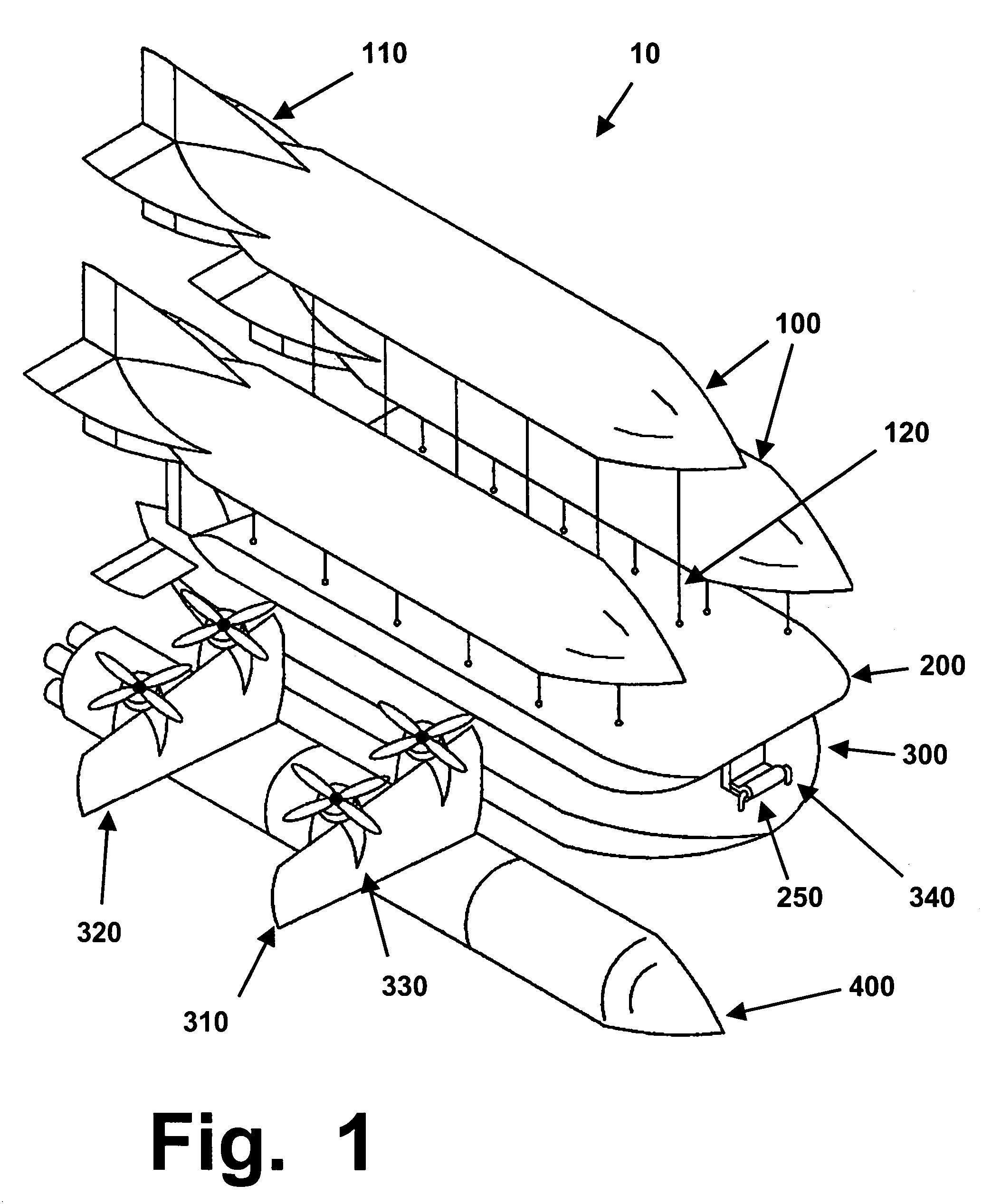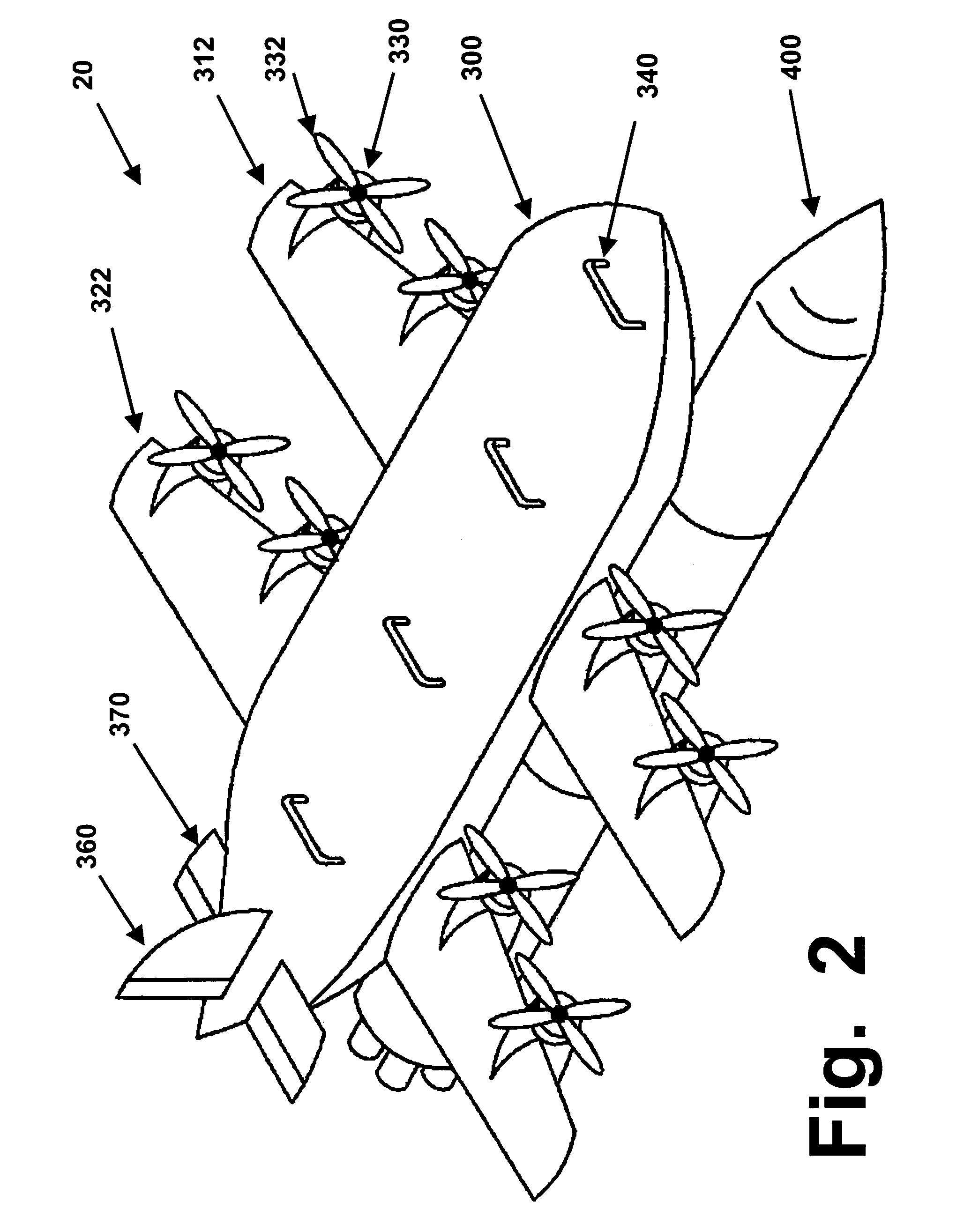High-altitude launching of rockets lifted by helium devices and platforms with rotatable wings
a technology of helium devices and rockets, applied in the field of rockets and aerospace engineering, can solve the problems of high stress and pressure, high cost, and high cost of rockets to lift a payload into orbit, and achieve the effects of less violent, less potentially threatening and destructive, and avoiding high stress and pressur
- Summary
- Abstract
- Description
- Claims
- Application Information
AI Technical Summary
Benefits of technology
Problems solved by technology
Method used
Image
Examples
Embodiment Construction
[0053]As summarized above, this invention discloses a system for using helium-filled vessels, and a platform with propeller engines on rotatable wings, to slowly lift a rocket to a high altitude (such as higher than 10,000 meters, or about 30,000 feet). This system is depicted as system 10, in FIG. 1. It can be regarded as having four main subassemblies, or layers. Each of these four main subassemblies is discussed below, under its own subheading.
Helium-Filled Vessels 100
[0054]The uppermost components of the system 10 shown in FIG. 1 comprise large helium-filled vessels 100.
[0055]These vessels can be referred to by any of several terms, including dirigibles, zeppelins, blimps, or balloons. Certain implications of these terms should be recognized, as a preface to using them properly and selecting a preferred term.
[0056]Balloon is the broadest term, since it includes any flexible bladder-type envelope or enclosure that can be filled with a liquid or gas. However, when applied to heliu...
PUM
 Login to View More
Login to View More Abstract
Description
Claims
Application Information
 Login to View More
Login to View More - R&D
- Intellectual Property
- Life Sciences
- Materials
- Tech Scout
- Unparalleled Data Quality
- Higher Quality Content
- 60% Fewer Hallucinations
Browse by: Latest US Patents, China's latest patents, Technical Efficacy Thesaurus, Application Domain, Technology Topic, Popular Technical Reports.
© 2025 PatSnap. All rights reserved.Legal|Privacy policy|Modern Slavery Act Transparency Statement|Sitemap|About US| Contact US: help@patsnap.com



